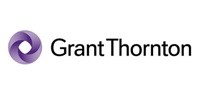
Gillian Saunders, head of advisory services of Grant Thornton Johannesburg and global leader: hospitality and tourism of Grant Thornton International said that in the 20 years since democracy, the South African tourism industry has made significant strides.
"We've done exceptionally well in a number of areas and since democracy we've really opened up as an international tourist destination in a big way," said Saunders. "If we had to score ourselves, we've definitely passed, but I wouldn't quite say that we've achieved an 'A'. Amongst other things more focus is needed in some key areas, such as combating South Africa's dire crime situation and on improving empowerment in this sector to really ensure we succeed in the next 20 years."
According to the United Nations World Tourism Organisation global data international tourist arrival numbers grew from more than 500 million in 1994 to more than a billion visitors in 2013, an average annual growth rate of 4% over that period. In fact, the only year that tourist numbers declined was in 2008/9, with the onset of the global financial crisis.
During that 20-year period South Africa's visitor growth outstripped the global average, achieving a rate of 6.9% per year - our foreign visitors increased from less than 4 million in 1994 to more an estimated 14 million in 2013. Official tourist numbers [overnight visitors] , which were only introduced in 2009 by Stats SA indicate that tourist numbers have grown from about 7 million in 2009 to just below 9.5 million in 2013.
"The advent of democracy and the societal changes that came with it brought a wave of positive sentiment and international exposure that led to interest in the country," said Saunders. "In 1995 we saw an amazing 22% growth in foreign visitor arrivals and a whopping 52% growth in overseas visitor arrivals. This increase in travellers into the country had a direct impact on the industry as significant investments were made into accommodation, tourist attractions and related industries in the second half of the 90s."
The accommodation sector has exploded during the post-democracy period. The latest available numbers recorded in 2009 before the 2010 FIFA World Cup indicate that the total number of hotels more than doubled from 726 in 1994 to more than 1500.Accommodation in Joburg has increased from fewer than 8000 rooms in 1994 to almost 20,000 in 2011 and, since then, virtually no new hotel stock has been added. In Cape Town, rooms increased from 3200 to 13,600 and in Durban from 5000 to 7000.
Other indicators of tourism infrastructure growth from 1994 to 2014 are equally impressive. Casinos have grown from 17 often small semi-rural establishments to 38 large mega-complexes; the total car hire fleet from 25,000 to 65,000; luxury coaches from 340 to 720; and international airlines now flying to South Africa from 21 to 76. The country also boasts eight world heritage sites today compared to none in 1994.
The direct tourism economy today provides employment for 645,000 people with an average annual growth rate of 4.7% over the period and up from around 250,000 in 1994. Similarly the industry's contribution to GDP has also grown significantly and now stands at 4.3% or R103.2 billion compared to 1.7% or R7.2 billion (R24.5 billion in 2014 rands) in 1994. If one considers the contribution of the indirect tourism economy then the above contribution figures more than double.
Despite the successes though, Saunders said that the industry has fallen short of its growth potential.
"While the Department of Tourism and South African Tourism have improved in leaps and bounds, still not enough is being done to market the country internationally. In my view there needs to be a much bigger budget allocation to destination marketing in a bid to attract more visitors to our shores. We are still well below international destination marketing spend levels," she said.
The budget allocations announced for tourism, by former Finance Minister Pravin Gordhan in February this year, were disappointing. The budget allocation specifically for South African Tourism for the 2014-15 year was increased by a mere 2.6%, an amount which is almost half that of the country's current inflation rate. According to the Travel and Tourism Competitiveness Report for 2013, produced by the World Economic Forum (WEF), South Africa is ranked at number 135 out of 140 countries for Travel and Tourism government expenditure. "We say all the right things about tourism as a priority but we don't put our money where our mouth is."
Saunders added that the ongoing negative safety and security perceptions of South Africa did, and continue to, constrain growth in international tourism to our country. If we could address this reality, as well as work on the message that tourists can experience our country safely, we could see further strong growth in tourism and South Africa could find itself among the leading tourism destinations with the resultant financial benefits to the industry and the economy as a whole.
20 Years of Tourism is a report produced by Grant Thornton. A copy of the report can be downloaded from the Grant Thornton website (www.gt.co.za) or by e-mailing ten.asmoklet@gnilhteenrovert